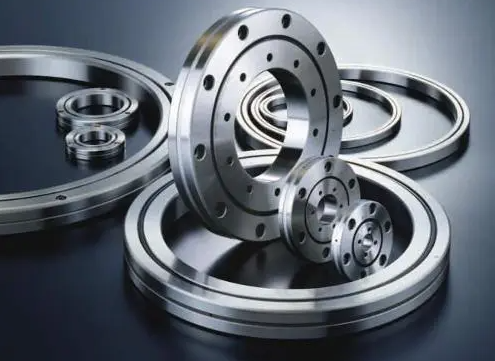Bearings are widely used in transmission systems, and mechanical engineers frequently encounter them during design processes. Their advantages include low friction resistance, high maximum rotational speed, and cost-effectiveness.
When selecting bearings, engineers must first choose the appropriate bearing type based on factors such as load conditions, speed capacity, noise requirements, and installation requirements. Additionally, temperature and environmental constraints must be considered when selecting bearing materials and lubrication methods. Finally, the selected bearing model must undergo a service life calculation based on the design space dimensions.
Of course, standard ball bearing models are still widely used today, and most engineers are accustomed to directly obtaining CAD models from part libraries, saving time on repetitive modelling and significantly speeding up the actual ball bearing design selection process. Today, we will use models from the part library as examples to examine the common characteristics of bearings. Let’s take a look!

Deep groove ball bearings
Features: Primarily designed to withstand radial loads, they are the most widely used type.
Applications: Deep groove ball bearings are primarily designed to withstand radial loads, but they also perform well under combined radial and axial loads; they have a low coefficient of friction and are suitable for high-speed applications; their simple structure allows for high precision, making them suitable for mass production.
Angular contact ball bearings
Features: High axial load-carrying capacity.
Applications: Angular contact ball bearings offer advantages such as high speed, high precision, and low noise and vibration. They are primarily used in applications where axial forces are too high for deep groove ball bearings to be suitable.
Self-aligning ball bearings
Features: Self-aligning functionality

Applications: Self-aligning ball bearings are suitable for applications where the shaft is prone to deflection or where the bearing housing bore has poor positioning accuracy in long shafts. However, due to their lower rigidity, they are suitable for applications with low speeds and no strict requirements for noise and vibration.
Thrust ball bearings
Features: Can only withstand unidirectional axial loads
Applications: These bearings are designed for applications with high axial loads, low speeds, and high torque.
Sliding bearings
Features: Smooth, reliable operation with no noise.
Applications: Sliding bearings are typically used in high-speed, light-load conditions.
Radial bearings
Features: Generally available in three different arrangements: back-to-back (wide sides facing each other), face-to-face (narrow sides facing each other), and in-line (side by side).
Applications: Primarily used as rolling bearings for radial loads, with a nominal contact angle ranging from 0° to 45°.
Thrust bearings
Features: Specialised bearings designed to withstand axial forces.
Applications: Primarily used in automotive steering mechanisms, machine tool spindles, hydroelectric generators, vertical electric motors, ship propeller shafts, tower cranes, and extruders.
Combination bearings
Features: Rolling bearings that combine both of the above bearing structures within a single set.
Applications: Combined applications, such as needle roller and thrust cylindrical roller combination bearings, needle roller and thrust ball combination bearings, and needle roller and angular contact ball combination bearings.
Spherical plain bearings
Features: High load capacity, impact resistance, corrosion resistance, wear resistance, self-aligning capability, and good lubrication.
Applications: Widely used in engineering hydraulic cylinders, forging presses, construction machinery, automated equipment, automotive shock absorbers, hydraulic machinery, and other industries.
Roller bearings
Features: Low starting torque, high rotational precision, and convenient selection.
Applications: Roller bearings are a type of rolling bearing and are one of the most widely used components in modern machinery.
Needle roller bearings
Features: Roller bearings with cylindrical rollers, where the rollers are thin and long relative to their diameter.
Applications: Suitable for support structures with restricted radial installation dimensions.
Post time: Jun-20-2025